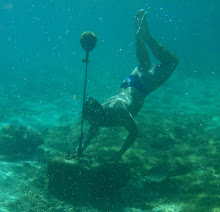
As always I had my usual summer escape to the cold end of Europa over Christmas - hereby once again highlighting the severe delay this very blog suffers from. In Denmark we statistically get ca. one white Christmas per 10 years i.e. the ground actually being snow covered on the 24th of December. A usual hobby of ours is to follow the various meteorologists publishing the probability of getting a white Christmas all the way through December - 2010 was different, very early on the bookmakers could stop taking bids, everyone knew it was going to be a very very cold white 2010 X-mas.


Danish winters teach you some good lessons in life, a couple worth highlighting here are: Eat well - it helps keeping you cozy and warm, and the other one is to get your lazy carcass outside every time there is just a hint of sunshine, you never know when the sun will be shining again. I have had heaps of joy following both of these rules of life! ;-)


As hinted above, this years winter was indeed something special. A delta T of -50 hits hard when you have slowly started adapting to the Australian temperature of life. A day after having been exposed to a leisurely 35°C in Sydney, I found myself in a very different habitat sporting a temperatures down to -17°C, I managed to capture the thermometer in the car in previously unseen territory of -15°C, you will have to trust me on the additional 2 degrees of frost.



A cold crisp Danish winter day is actually surprisingly good for a solid walk, as long as you keep yourself moving and dress wisely it is pure joy. The wise choice of cloth should include a "system" that keeps your fingers warm and still allow you to press that trigger ... I need to upgrade my equipment in that regard, holding 3 kilo of ice cold metal will make your fingers numb instantly when the mercury is in the minus two digits range.


I managed to squeeze in a bit of ice birding during a visit to a historically early frozen Limfjorden - normally this stretch of inland water in the north of Jutland does rarely freeze solid and of the few times this have happened before in my lifetime, I do not recall it ever happening this early in the year.


Birding during such conditions you have to be careful not to stress the birds, the last thing you want to happen is the birds having to burn precious energy fleeing their position because you pushed in to close trying to get a better shot. They are already stressed by suddenly having lost their natural defense against the usual 4 legged predators - foxes in particular - having access to their now landlocked roosting areas away from the coast.


A snow dressed Danish winter landscape, with high blue sky and crisp air is a pretty beautiful sight - quite lucky, since resent events means that I will probably soon have to spend a bit more time under such conditions.

















